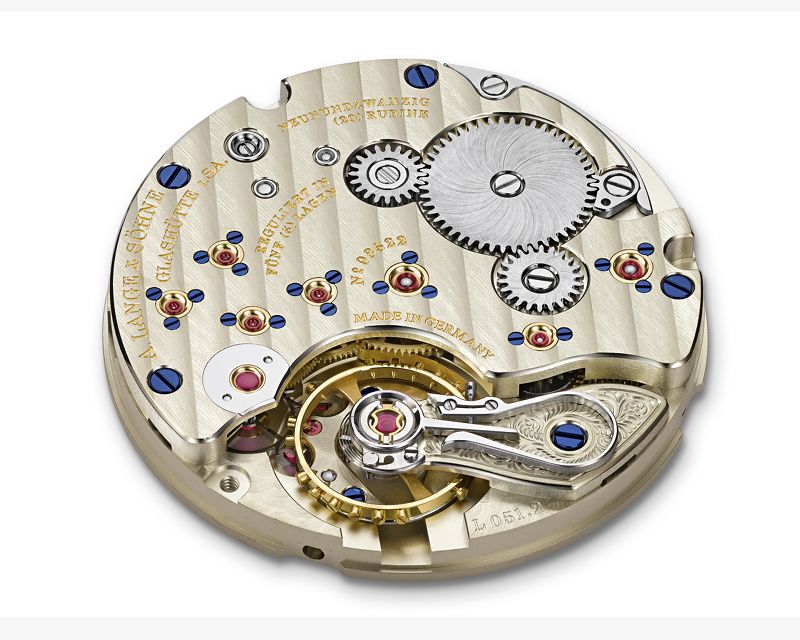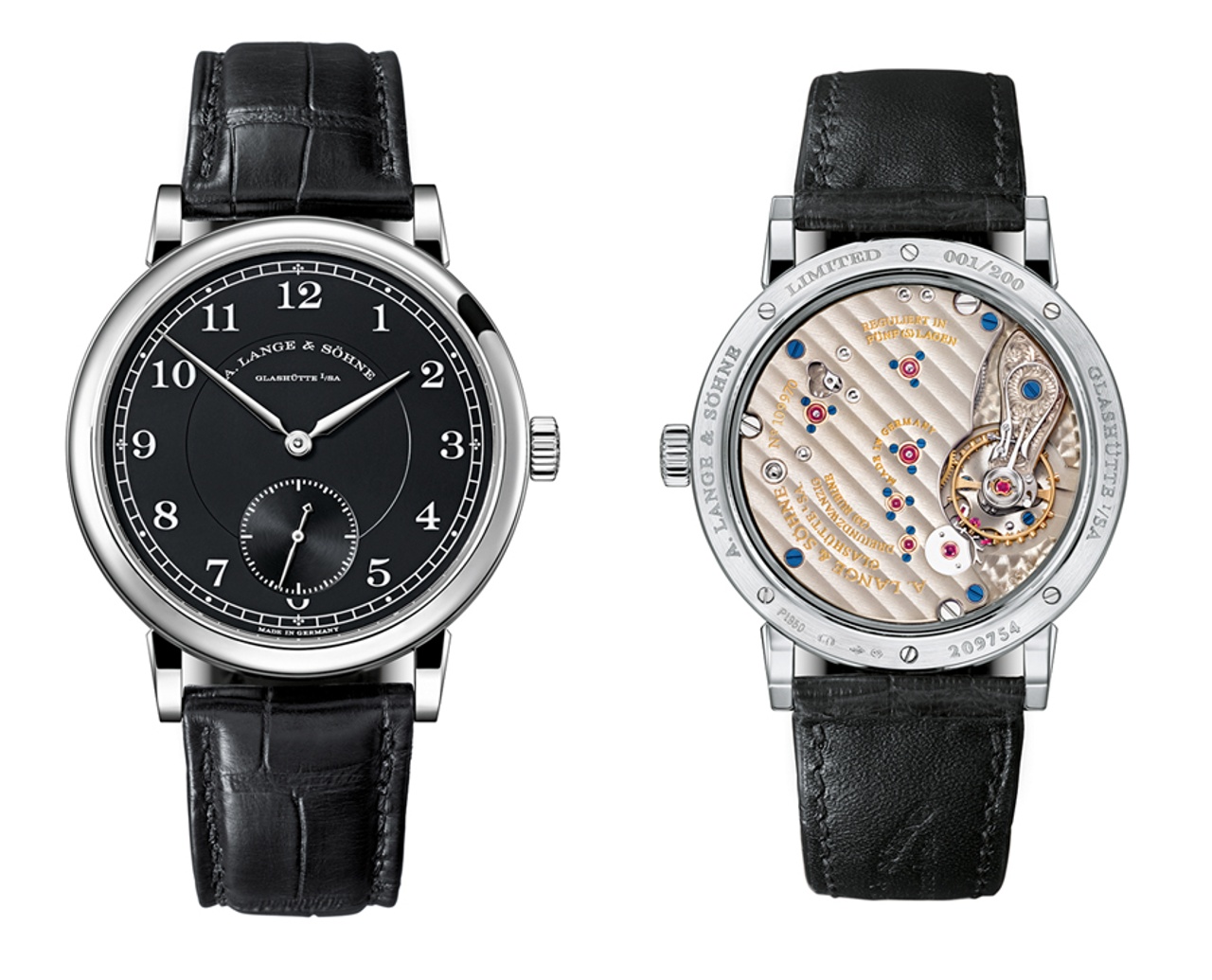The three-quarter plate: a style hallmark for A. Lange & Söhne
Ferdinand Adolph Lange was a perfectionist watchmaker, seeking the optimum engineering solutions for its watches.
This is the reason why he worked on the evolution of the many separate bridges and cocks commonly used to assembly the movement of a watch. For the watchmaker it was a quite hard work, made of trials and errors, to find the perfect position for each wheel relative to another.
Ferdinand Adolph Lange developed a new solution: he created an upper plate to accomodate all the pivots of the main wheels of the movement. This new approach allowed a faster assembly of the movement, even if advanced skills of the watchmaker were needed to steer simultaneousely all arbors into the bores on the underside of the plate. The design of this plate was improved with a continuous work lasting more thank 20 years. It grew in several steps until it ended to cover three quarters of the movement. The balance coq was the only exposed part of the caliber. Beside the assembling advantage, a three-quarter plate was described also as a solution to reduce the amount of dust entering between the wheels of the caliber.

Mr. Lange was granted a US patent for its three-quarter plate in March 1875.
After 1990, the three-quarter plate was reintroduced as a typical hallmark of A. Lange & Söhne timepieces.



























